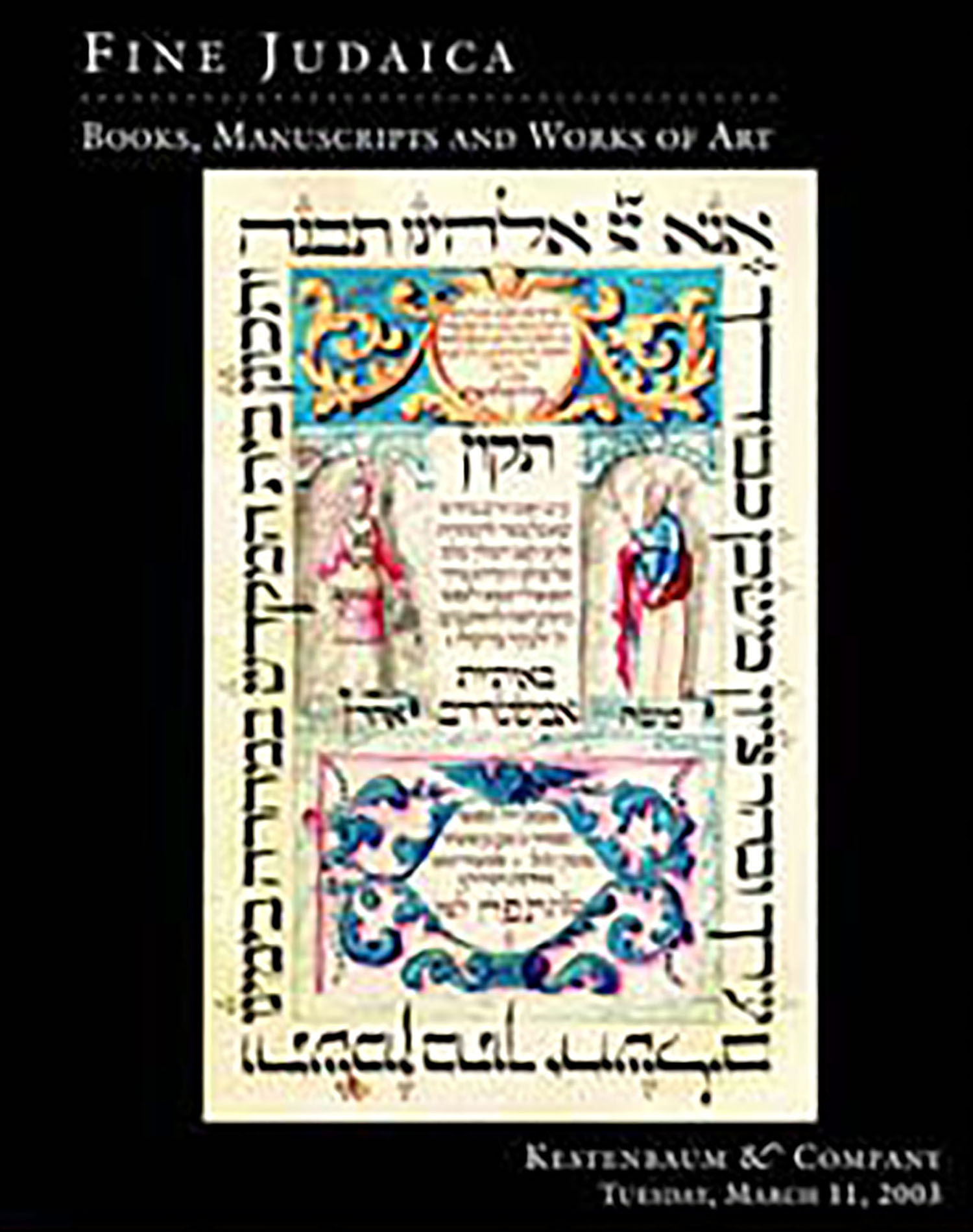(BLOOD LIBEL). Yepes, Fray Rodrigo de. Historia de la muerie y glorioso martyrio del Sancto Innocente [“History of the Death and Glorious martyrdom of the Holy Child of La Guardia”- an account of the blood libel of the Holy Child of La Guardia]

AUCTION 19 |
Tuesday, March 11th,
2003 at 1:00
Fine Judaica: Printed Books, Manuscripts and Works of Graphic Art
Lot 28
(ANTISEMITICA)
(BLOOD LIBEL). Yepes, Fray Rodrigo de. Historia de la muerie y glorioso martyrio del Sancto Innocente [“History of the Death and Glorious martyrdom of the Holy Child of La Guardia”- an account of the blood libel of the Holy Child of La Guardia]
Madrid: 1583
Est: $5,000 - $6,000
PRICE REALIZED $6,500
The alleged martyrdom by Jews of the infant La Guardia of Toledo in 1490 was a blood libel which the Church developed over centuries as a source of intense religios devotion. Six Conversos and two Jews were accused of the profanation of the Host and with the crucifixion and murder of a Christian child and the extraction of his heart for acts of sorcery. The accused were arrested by the Inquisition in 1490, either in Segovia or Astorga, and were summoned before the tribunal at Avila, where Torquemeda himself presided. It is most probable the Inquisition wished to prepare Spanish public opinion for the expulsion of the Jews from Spain and utilized this sensational trial for the purpose. The child of La Guardia never existed, but the accused were either strangled and then burned or burned alive at the stake. The verdict was made public and circulated throughout Spain and the worship of the “Holy Child” was rapidly instituted, which continued to exist in Spain for centuries thereafter. See EJ, X cols.1359-60
Provenance:
1) Albi Rosenthal
2) Alfred Rubens
